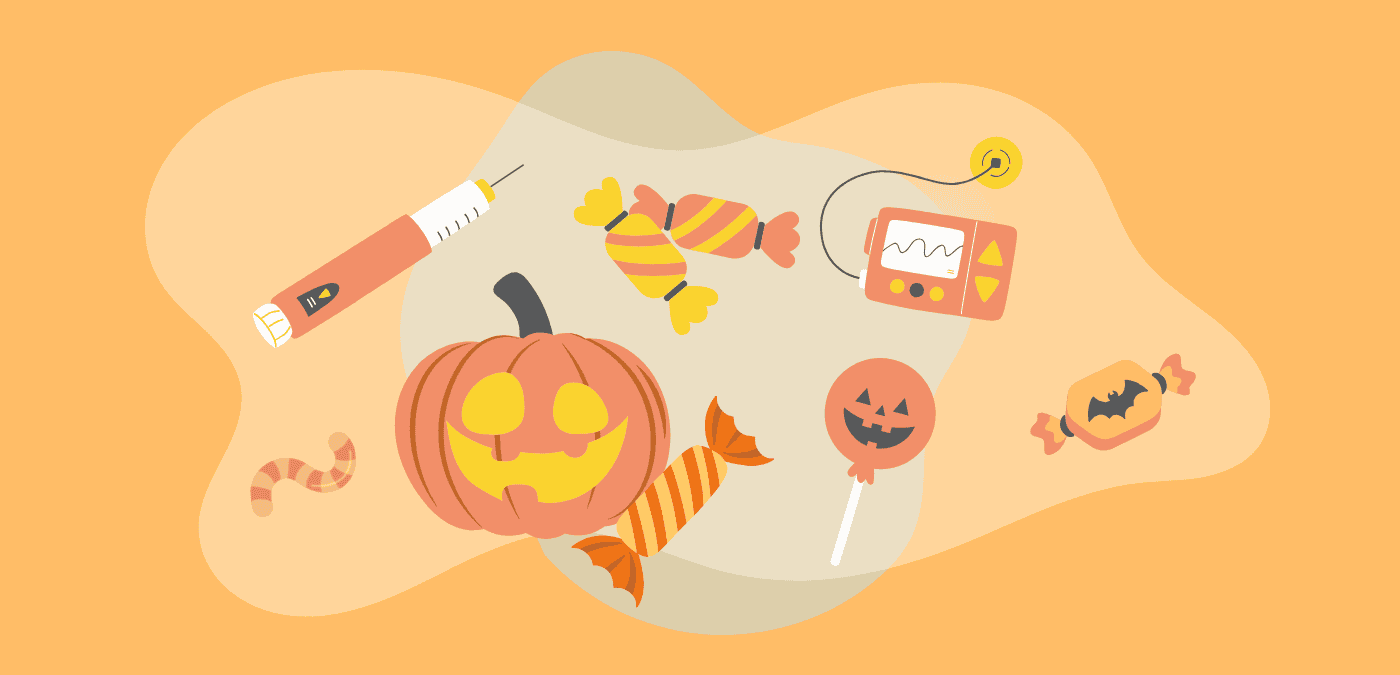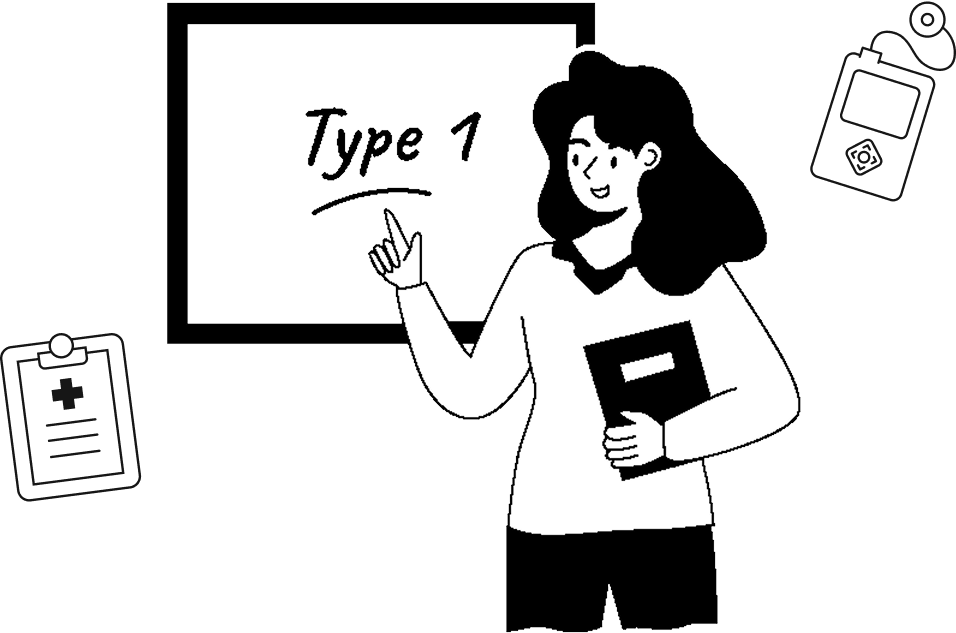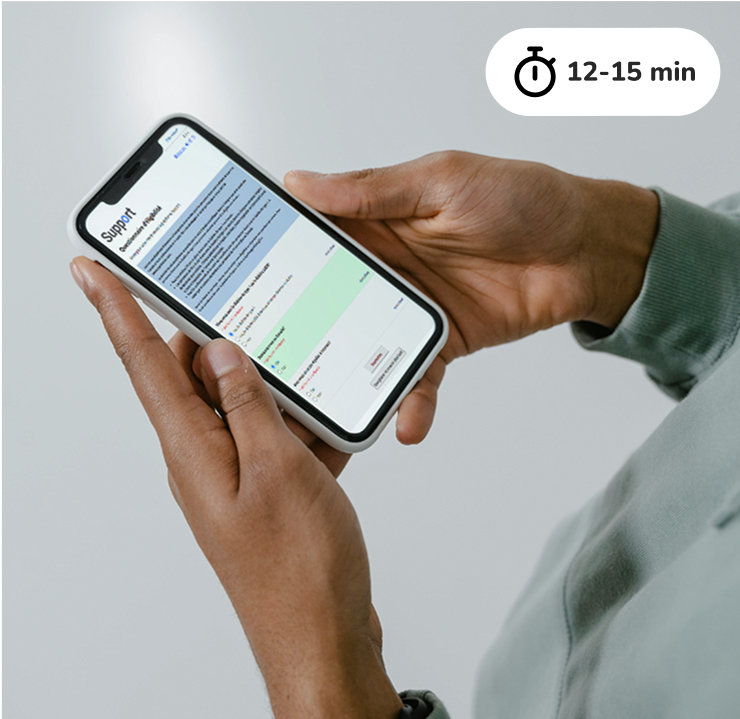October 31st often means costumes, pumpkins, laughter… and above all, mountains of candy, chips, and chocolate!
For parents of a child living with type 1 diabetes (T1D), this holiday can sometimes feel like a real puzzle when it comes to blood sugar management. The good news? With a little preparation and some simple strategies, it is entirely possible to enjoy the magic of Halloween to the fullest.
Here are some practical tips to combine fun and safety.
Minimizing impact on blood sugar: yes, it’s possible!
Trick-or-treating is an exciting activity, and also a real expenditure of energy. To avoid low blood sugar, it is best to serve your child a balanced meal before heading out, including carbohydrates, protein, and healthy fats. This will help stabilize blood sugar at the start of the evening. Checking blood sugar before and during the outing is also recommended, and having a small snack on hand can be reassuring.
This snack can be an opportunity to include some of the collected candy, but ideally paired with a small portion of protein such as nuts or cheese. In practice, trick-or-treating can be approached much like any other physical activity, by applying the usual strategies for managing blood sugar before, during, and after the effort.
Managing candy once you’re back home
When children return home, the excitement continues as they sort through their candy haul. This is when management strategies become essential. Sweets like gummies, lollipops, and bubble gum consist almost entirely of fast-acting sugars. These can raise blood sugar very quickly, sometimes before insulin has had time to take full effect. This mismatch may lead to hyperglycemia, followed by hypoglycemia when insulin peaks after the carbohydrates have already been absorbed.
To help prevent these fluctuations, you might agree with your child that they can enjoy a few candies that same evening, ideally paired with a protein source. It may also be helpful to set aside certain candies to build a stock for treating hypoglycemia in the weeks ahead. In this case, choose candies that contain only fast-acting carbs (excluding chips or chocolate), and divide them into portions that match the usual amount you use to treat a low (often around 15 g of carbs). Another useful approach is to enjoy candy as dessert at the end of a meal, so that the carbs are included in the mealtime insulin dose and blood sugar fluctuations are better managed.
Knowing the carbohydrate content of candy
Several resources can help estimate carbohydrate amounts. Our practical guide on the carbohydrate content of popular Halloween candies is a good starting point. Health Canada also provides a list of certain types of sweets and candy and their nutrient value. If you cannot find information for a particular item, a quick Internet search or specialized apps can often provide reliable estimates.
Alternative ways to celebrate
Of course, Halloween isn’t only about candy. It’s also a wonderful opportunity to create family traditions that highlight fun, creativity, and togetherness. You could, for instance, watch a Halloween-themed movie, carve and decorate a pumpkin before cooking it, organize a costume photo shoot, or prepare goody bags filled with non-food treats such as stickers, pencils, or temporary tattoos. These activities help shift your child’s attention toward sources of joy beyond sweets.
Halloween is a special holiday that deserves to remain a positive experience. It is perfectly normal for your child to eat more sweets than usual on this occasion, and that’s okay. The key is not to demonize candy, but to offer concrete strategies to help reduce the risk of lows or highs. By supporting your child with care and understanding, you will help them build a healthy relationship with food and create wonderful memories of this festive day.
🎃 Happy Halloween to you and your family! 🎃
(Text written in October 2021, updated in October 2025).
Reference:
- Follow these tips for a safe and fun Halloween. Diabetes Canada Website. (n.d.). Retrieved September 30, 2021, from https://www.diabetes.ca/media-room/news/follow-these-tips-for-a-safe-and-fun-halloween.




